24 Different VIOLIN BOWING Techniques | Violin Lounge TV #353
In this video I explain and show 24 different bow strokes on the violin
with examples from the best concert violinists and the most beautiful violin repertoire in classical music
The more you learn, understand and know about bow technique, the more free you are to express yourself in music on the violin
Your bowing technique is the most important tool of expression in violin playing. It’s like the breath, mouth and voice of a singer or the brush of a painter.
Before we dive into the hard core violin bow technique, here’s a big fat disclaimer:
Always remember violin playing is a form of art. Don’t see these bowing techniques black and white. You can do everything in between. Search for the mood you want to express with the music you play. These techniques are means to a musical end, bottles of paint to combine into beautiful shades and ingredients to make a meal that’s delicious for the ear.
UPDATE: My ultimate violin bowing nerd project
After making this video in 2019 I made an updated version in 2022 with 102 different violin bowing techniques, terms and symbols. Watch it right here!
24 Different Violin Bowing Techniques:
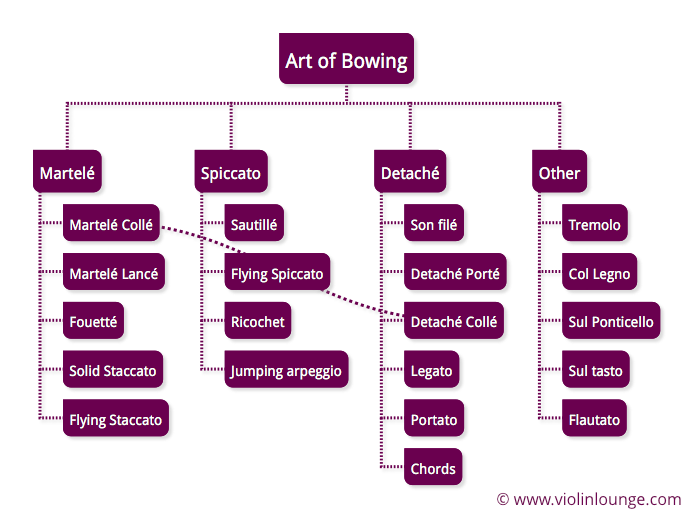
3 Categories of violin bow technique
You’ll notice in the overview above that I grouped the bow strokes in different categories.
In detaché your bow stays on the string and you play the notes in their full length, except for detaché collé. You have full control over the bow.
In martelé your bow also stays on the string and you have full control, but you don’t play the notes in their full length. There is ‘air’ in between the notes. It sounds more staccato.
In spiccato your bow leaves the string and you make use of the natural jumping quality of your bow. This makes spiccato a semi-passive bowing technique. Because there is time where the bow is above the string, the notes aren’t played in their full length.
‘Free bowing’ sounds cool. Why isn’t that in the overview?
Well, usually it’s detaché bowing and the violinists in an orchestra section do the bow changes on different moments within a very long note. This creates a full consistent sound for the entire duration of that note. If they would do their bow changes all at the same time, you would hear separated bow strokes. Normally bow strokes in an orchestra are synchronized. Free bowing is the exception.
Improve your violin bowing technique
Enjoy my FREE mini Masterclass 5 Bowing Secrets to Create a Professional Sound on the Violin

Detaché
Detaché is ‘normal bowing’: the bow remains on the string and you play the notes in their full length with a seamless bow change and perhaps a small accent at the beginning of every bow stroke, like in Bach’s partita in E major or Paganini’s 16th caprice in the video above.
Besides the normal detaché bowing there are two other types:
Detaché collé
In detaché collé you do a ‘slow motion’ or ‘put down’ spiccato: you lift the bow at the bow changes. This is a great preparational exercise for spiccato.

Detaché porté (or tenuto)
In detaché porté you emphasize the beginning of each bow stroke using a higher bow speed (no pressure accent). Don’t confuse it with martelé, that has a clear bite to it. Read more about martelé below or watch the video above.
Son filé
Son filé is a bowing technique in which you make a deep and full tone, like in the opening of the Bruch violin concerto. There’s no specific notation for this as effectively it’s detaché.
A weird, but effective, practice tip: while you create a full sound, imagine the back of your violin resonating. Your tone will be deeper.
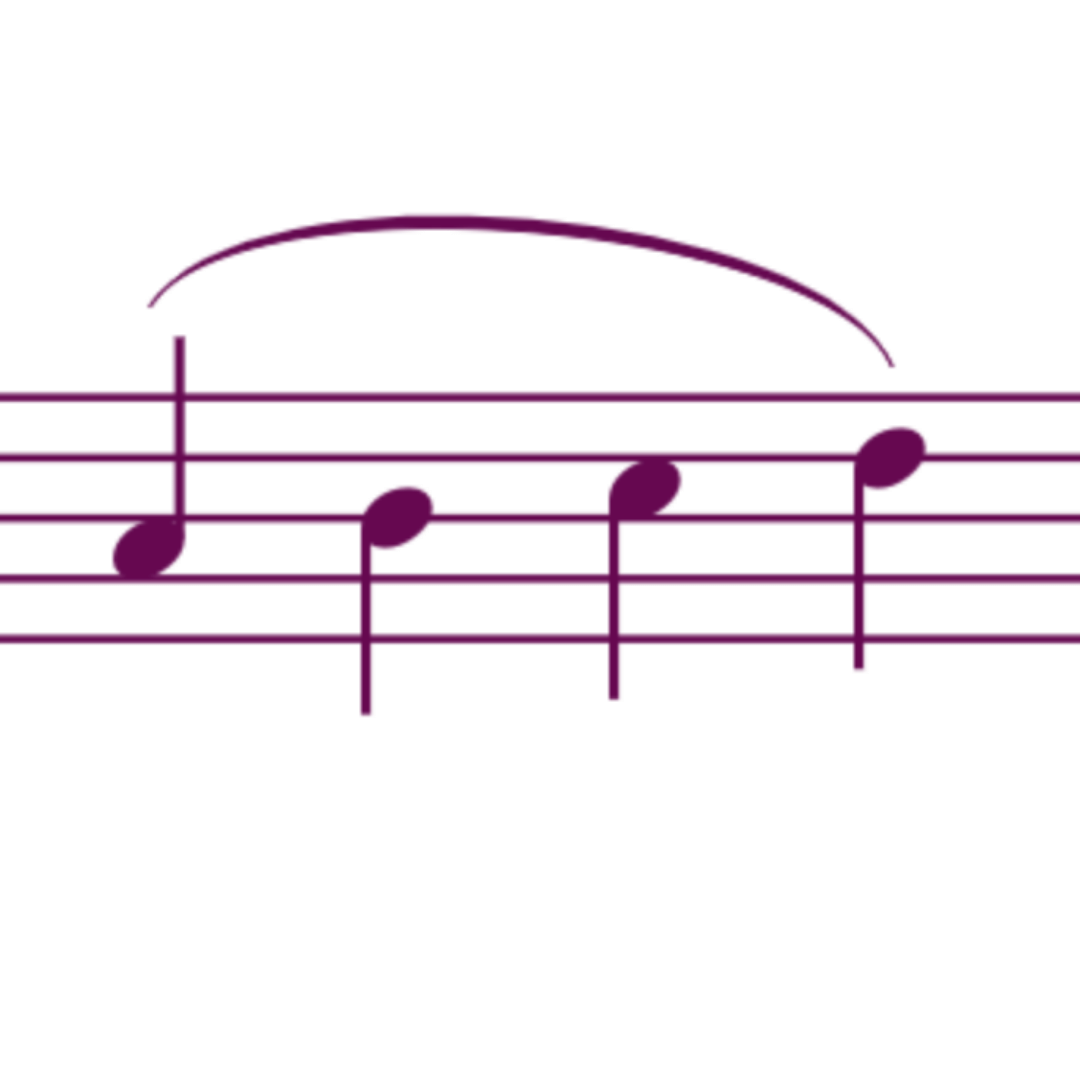
Legato
In legato you play multiple notes on one bow stroke. You hear fluent transitions between the notes. In sheet music you see a slur above the notes, like in the Tschaikovsky violin concerto excerpt I you can see and hear in the video above.
Fluent bow changes are very important in legato. You want the transitions between notes on one bow strokes sound the same as the transitions with a bow change in between. In this video I teach a little secret about silent bow changes.
Here you can find a video by concert violinist Vivien Hoffman explaining how to practice legato.

Portato
‘Opjes met stopjes’ I call this in Dutch when teaching my young private students: up bows with stops. It is a little similar to legato as you play multiple notes on one bow stroke, but you stop your bow between the notes without adding accents. It sounds a bit similar to detaché, like in the Mendelssohn violin concerto excerpt I show in the video above.
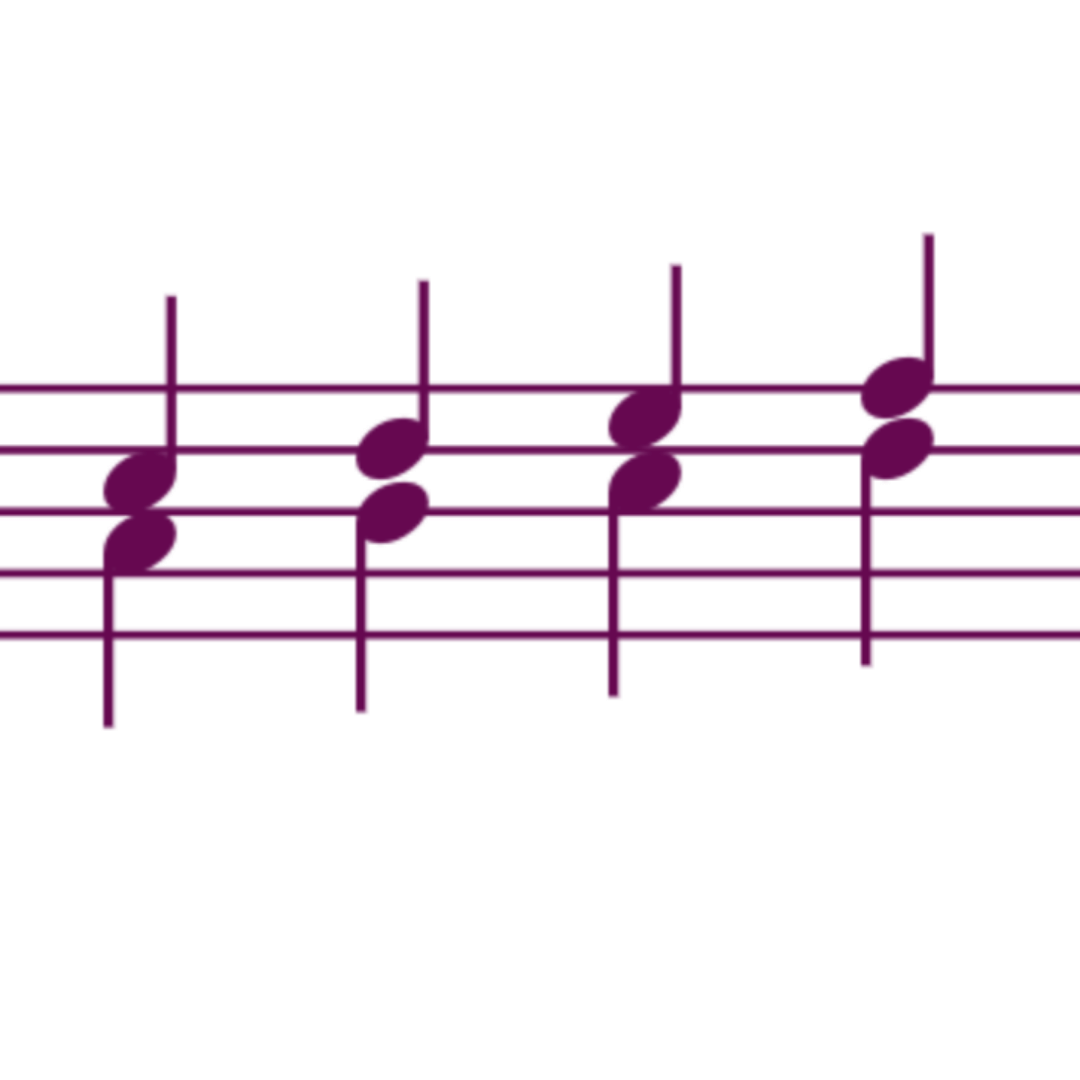
Double stops
When you see two notes above each other in the sheet music, you play on two strings at the same time and sometimes put fingers on two strings at the same time. We call this a double stop. In the video above I show you a beautiful example in Bach’s 2nd violin sonata, where the violin seems to accompany itself.
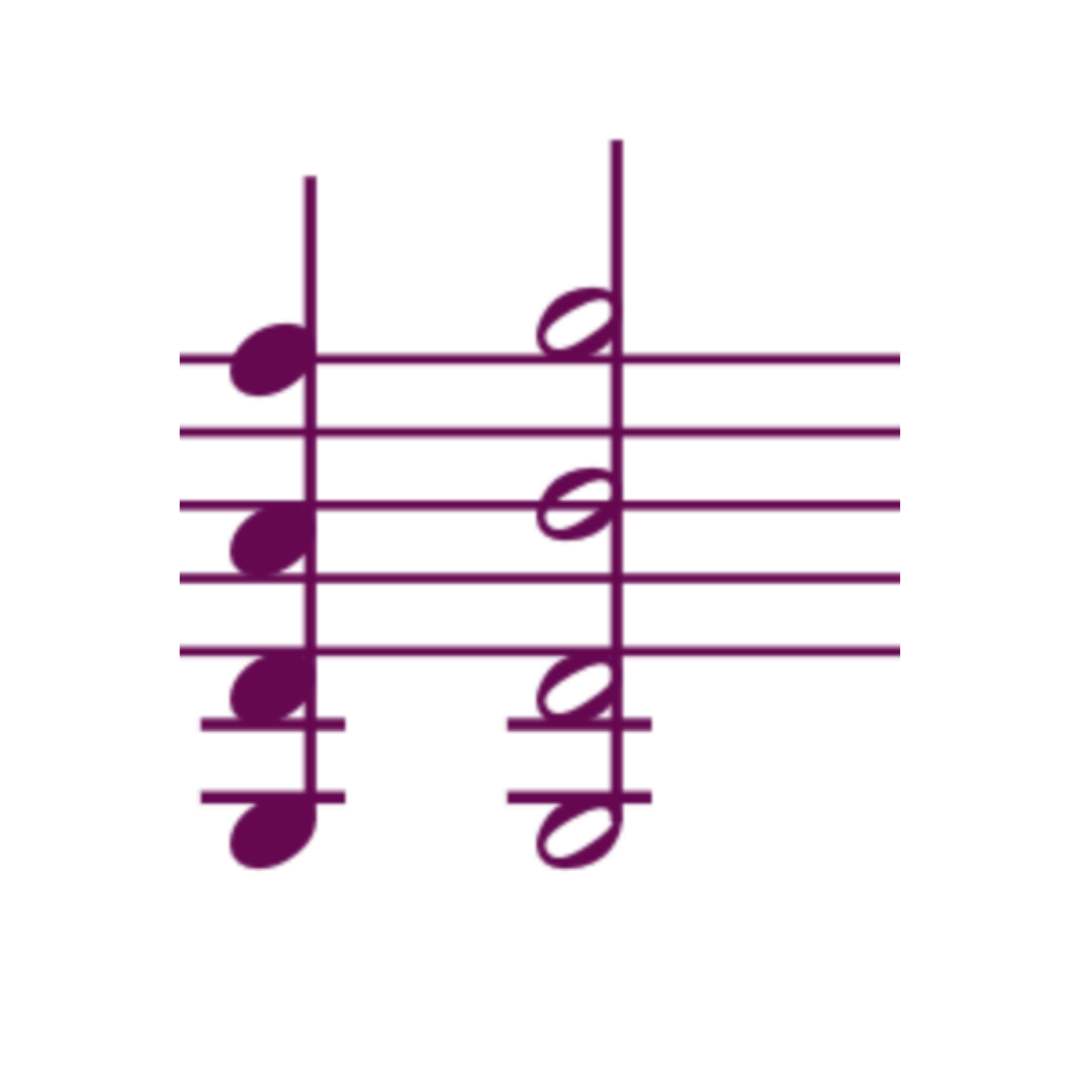
Chords
You play chords when you see three or four notes above each other. There are two ways to play this.
Broken chords
You can break the chord. In this case you play the lower notes first (shortly) and then the higher notes or highest note, like in the Bach’s chaconne example I use in the video.
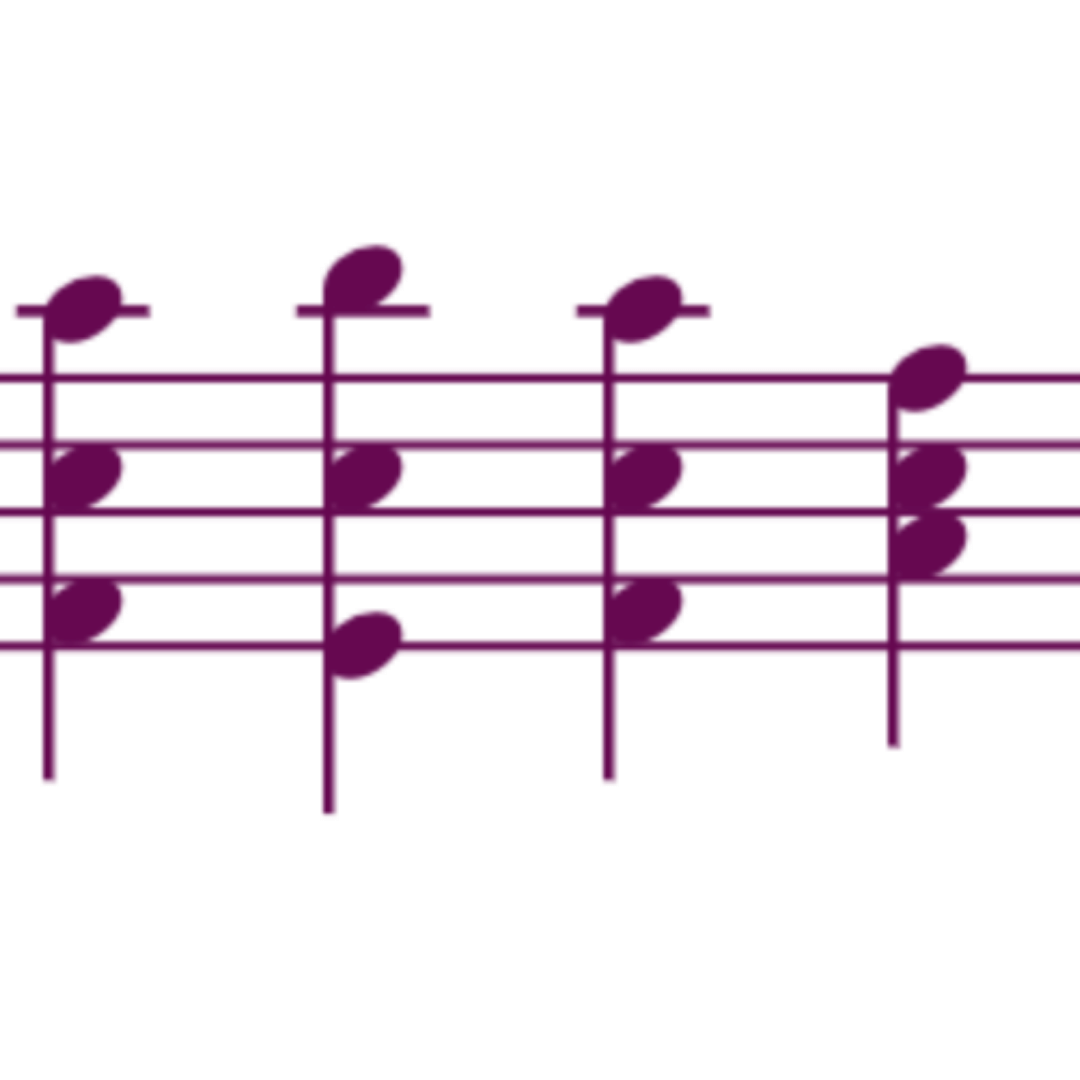
Triple stops
Thought double stops are tricky? Yup, you can also play three notes at the same time: three strings and sometimes even three fingers. That needs some force of the bow to make three strings sound at the same time. Usually you do this near the fingerboard.
Want to practice this? Go tease yourself with Dont etude nr 1.

Martelé
Martelé is French for hammered. In martelé you catch the string, release it and let the bow travel. In martelé the notes are shorter than in detaché. The sound is more ‘taaa’ than ‘laaa’. Every bow stroke starts with a ‘click’. In the video above you’ll see an example from the Sibelius violin concerto.
Timing is very important in this bowing technique. When you release the weight too early, you don’t get a ‘click’. When you release the weight too late, you get a scratch.

Collé bowing or martelé collé
Sometimes collé is used separate from martelé, but it refers to martelé collé. In martelé collé you lift the bow at the bow change. This looks a bit like slow motion spiccato or detaché collé, but with the typical popping sound of the martelé. A great example can be found in the Tschaikovsky violin concerto. In the video above I show you a passionate interpretation by Janine Jansen.
Martelé lancé
Martelé lancé is a longer bow stroke with higher bow speed at the beginning of the note. This looks a lot like detaché porté, but with firm accents. It’s a soft type of martelé, where the accent is more made by bow speed than by catching and releasing the string with weight.
Fouetté
Fouetté is the middle between spiccato on the string and a detaché with accents. Most of the time it’s played on the upper half of the bow like in the Mendelssohn violin concerto example I show in the video.
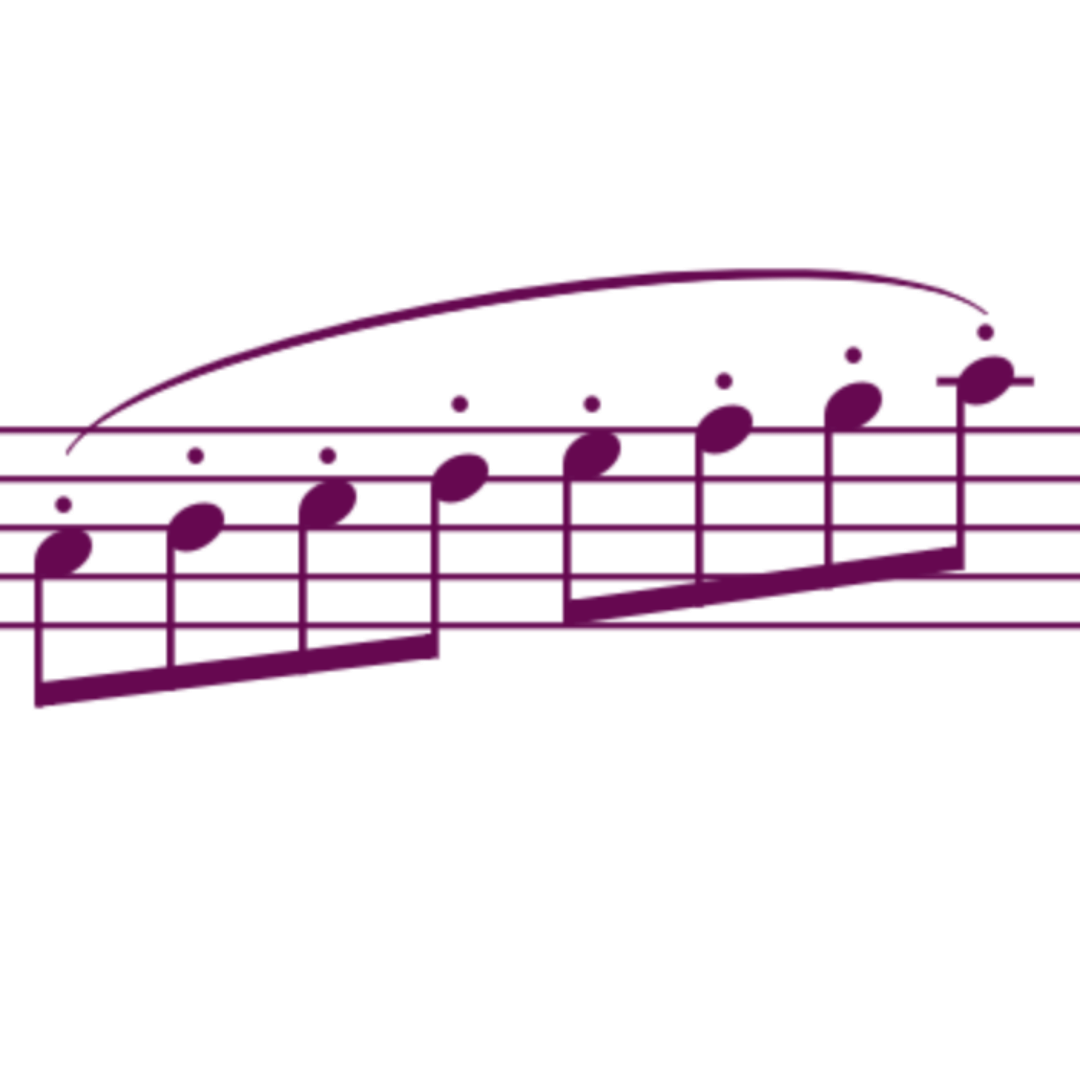
(Solid) Staccato
Sometimes the violin bow techniques staccato and martelé are mixed up. Often solid staccato is used to describe multiple martelé notes on one bow stroke, usually on the upper half of the bow. We see this in Wieniawski’s polonaise brillante.
Flying staccato
In flying staccato the bow leaves the string between multiple martelé notes on one bow stroke. Usually it’s done on the lower half of the bow. Your bow bounces, but you control the movement, like in the Schubert Sonatina example in the video above.
As flying staccato is something in between up bow staccato and flying spiccato, lots of teachers and performers don’t see it as a separate bowing technique.
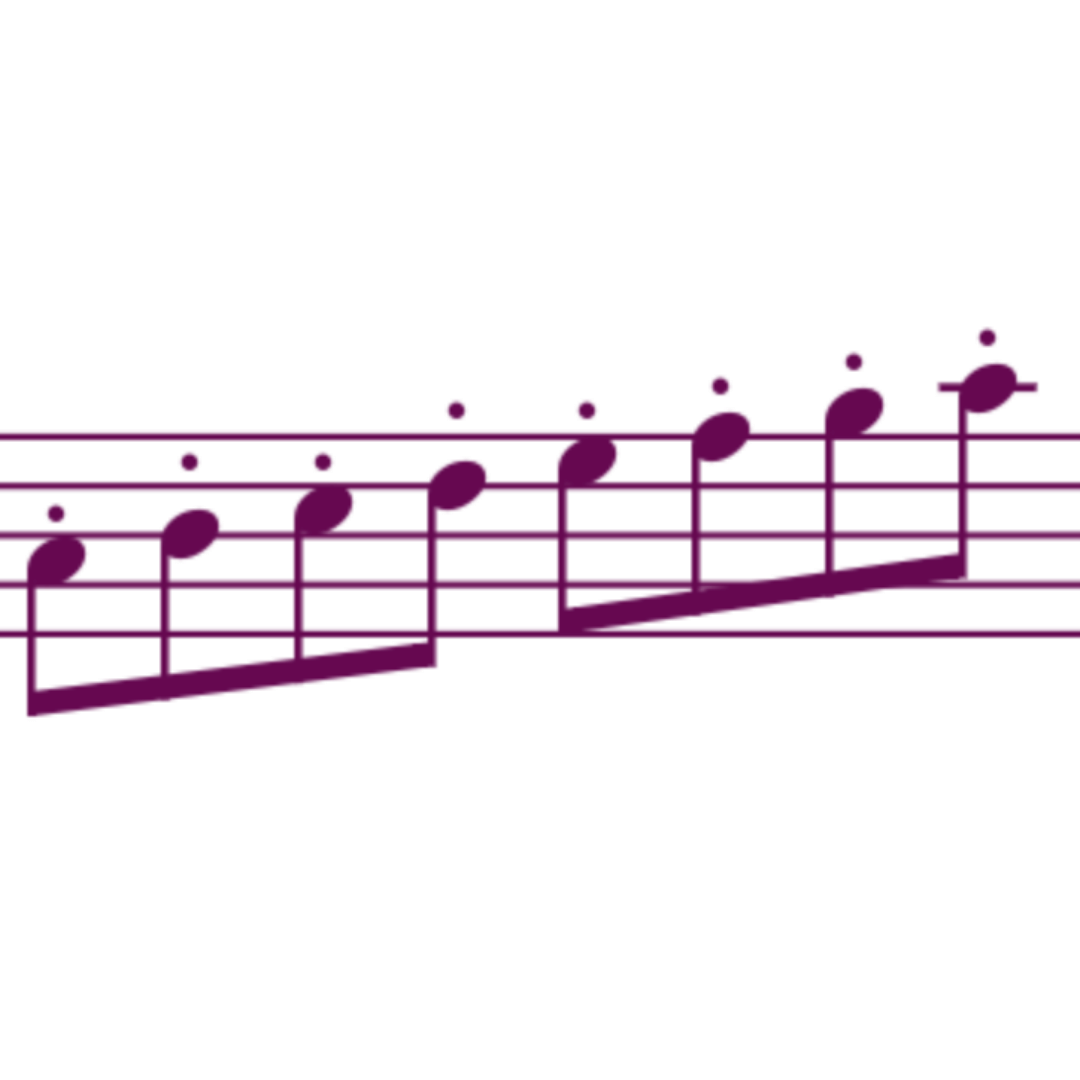
Spiccato
In spiccato you play the notes in shorter lengths and the bow leaves the string at the bow change. Spiccato uses the natural jumping quality of your violin bow and is a semi-passive bowing technique.
Spiccato works best about one centimeter above the balance point of your bow, but differs per bow and depends on the speed. The faster your spiccato, the higher up the bow, the smaller the movements and the more passive this bow technique gets.

Different bows have different ‘spiccato spots’. Can you find yours?
In the video I show some cool examples from Beethoven’s Spring sonata and Sarasate’s Zigeunerweisen. Two very different applications of the spiccato bow technique.
In all the previous bowing techniques finger action is EXTREMELY important, but especially in spiccato make sure that your wrist and fingers make smooth movements and you’re allowing the bow to bounce. With a stiff bow hold it’s impossible to do a good spiccato. Interested to learn more about finger action, watch this video about bowing smoothly!
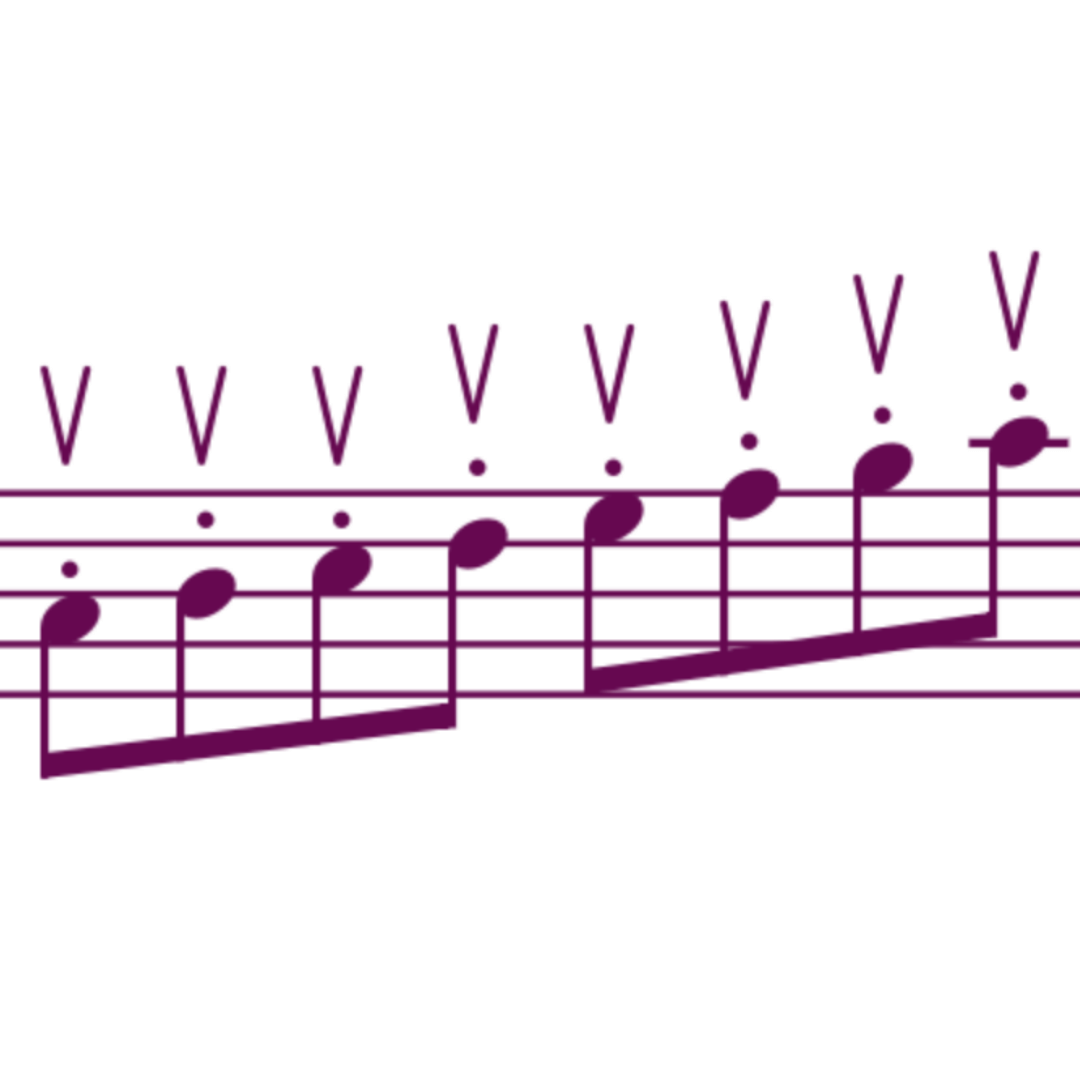
Flying spiccato
In flying spiccato you play several spiccato notes on one bow stroke and your bow almost stays on the same spot of the bow. The difference with flying staccato is that the bow doesn’t travel as much. We see an example in the Mendelssohn violin concerto that I show in the video above.

Sautillé
The more you speed up your spiccato, the further away from the frog you’ll get and the more the bow will bounce on it’s own. Eventually it becomes sautillé, like here in Paganini’s Perpetuum mobile. Sautillé is a passive bowing technique. Your fingers move along with the natural jump.
Interested to learn more? Check out my video on the 4 differences between spiccato and sautillé right here.
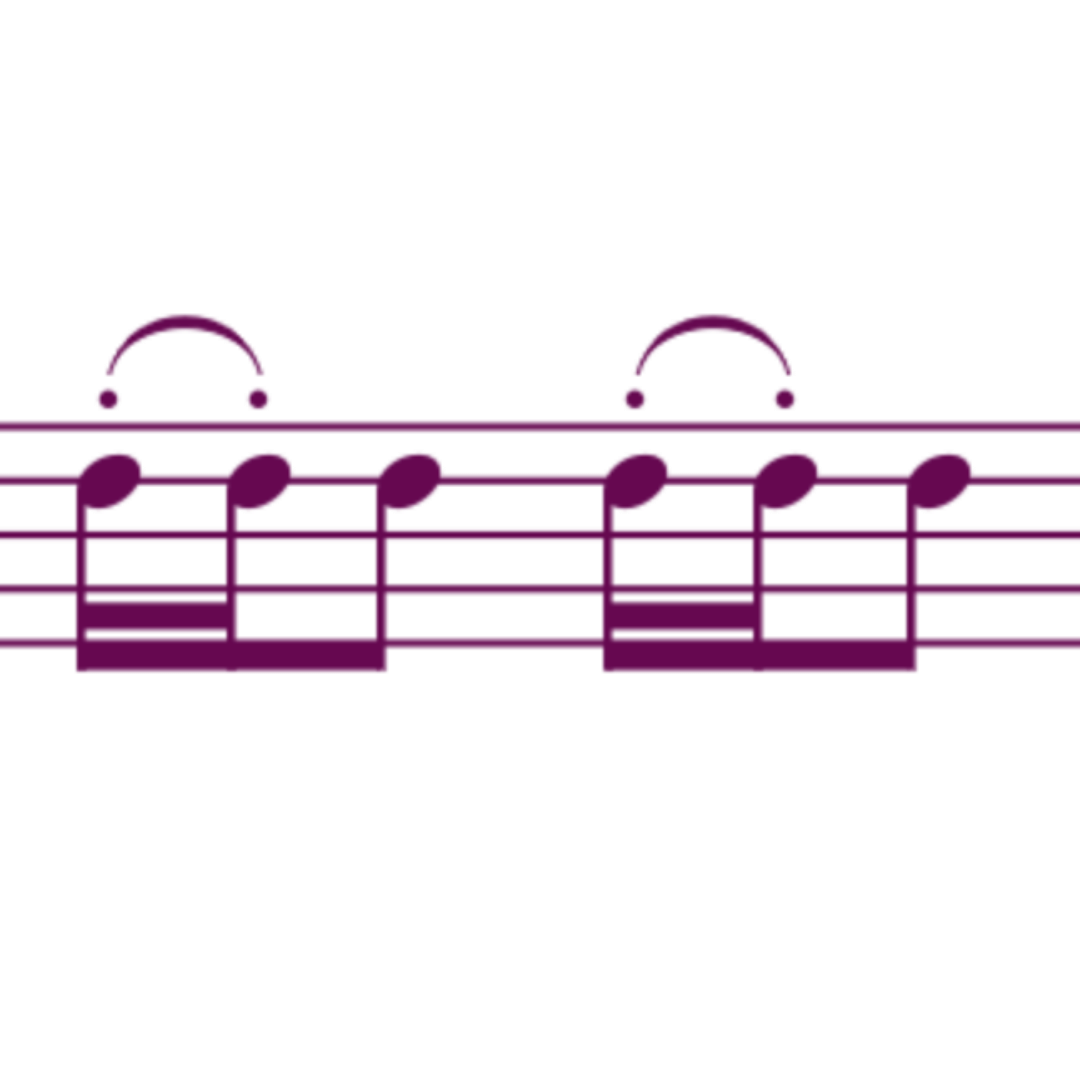
Ricochet
If you play several sautillé notes on one bow stroke by initiating the first jump and letting the bow bounce, we get ricochet. It’s like a pebble bouncing over the water surface. You can find ricochet in the original bowing of Paganini’s 5th caprice, which is horribly difficult: three notes on the down bow and one note on the up bow at an incredible speed. I show an awesome example in the video. Most concert violinists play this caprice with sautillé.
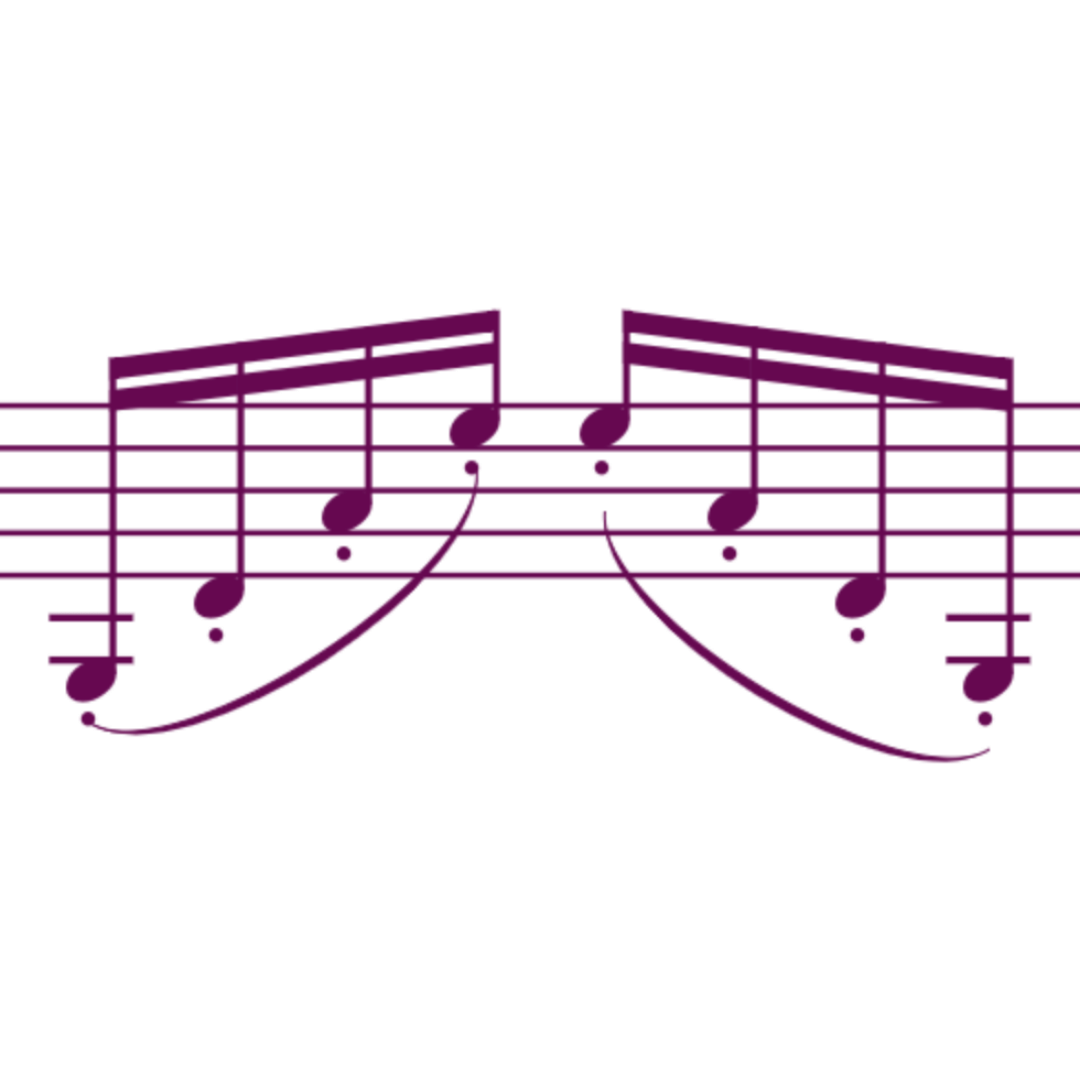
Jumping arpeggio
When you apply ricochet in broken chords, it’s called jumping arpeggio. A famous example is the cadenza in the first movement of the Mendelssohn concerto.
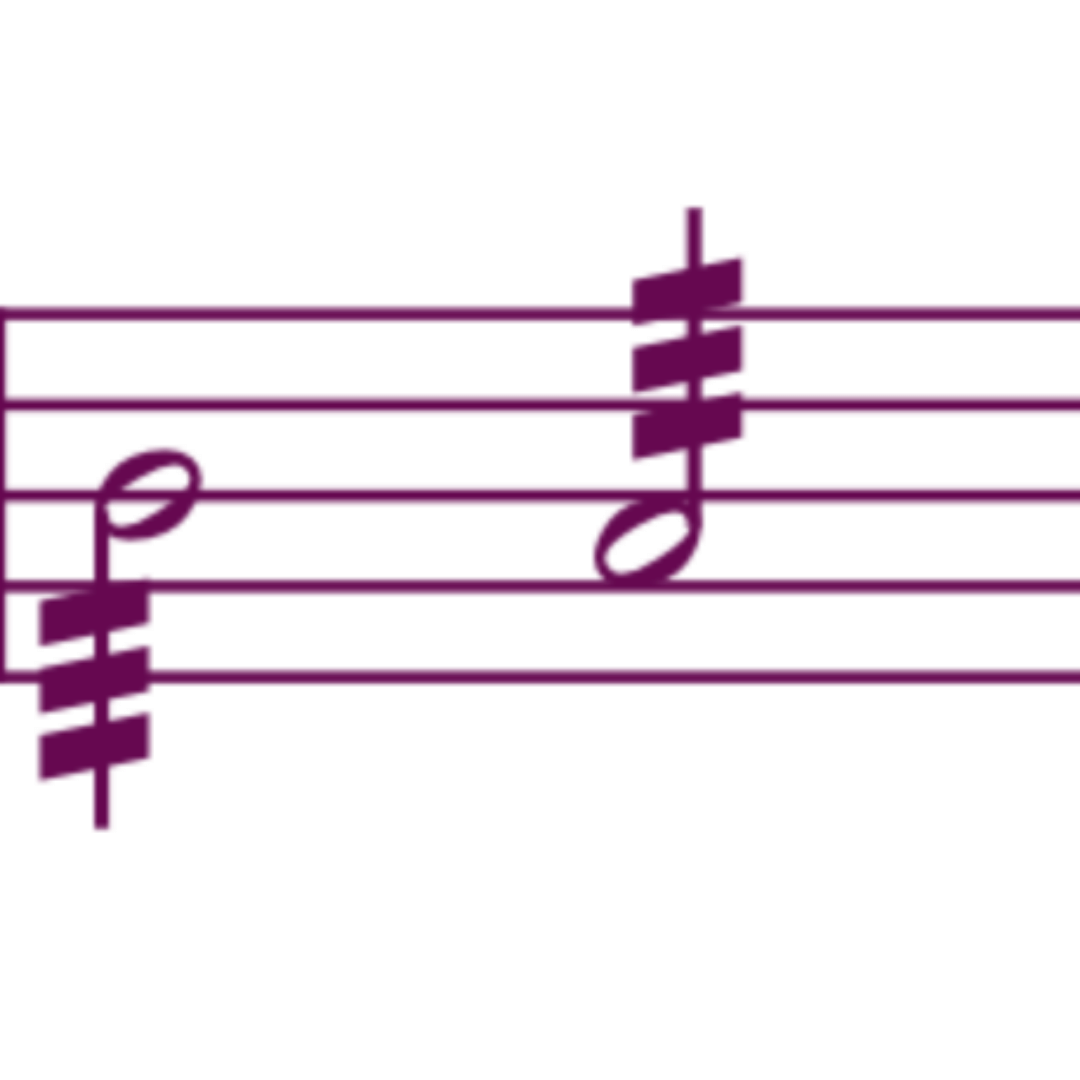
Tremolo
There are typical orchestral bowing techniques like tremolo. This means you make short bow strokes at the tip of the violin bow. A beautiful example is the beginning of Bruckner’s 7th symphony with tremolo in different dynamics.
Interested to learn more? Go here for my video with tips on tremolo.

Hi! I'm Zlata
Classical violinist helping you overcome technical struggles and play with feeling by improving your bow technique.
Col legno
In col legno you turn the bow upside down and you play with the wood on the string. In the video I show an example of this in the lower strings accompaniment in Mozart’s 5th violin concerto.
Sounds scary for your precious bow?
Con carbon?
When I have to play col legno in an orchestra I’m happy to play con carbon with my carbon fiber violin bow. Modern bows offer more advantages like the light weight, beautiful resonance and stiffness.
You might be wondering what difference your bow makes
Well… a lot and you can learn all about it in my guide to buying a violin bow you can download right here. In it concert violinist Giedre and I demonstrate and discuss carbon violin bows of all sorts and prices. Very interesting stuff if you’re working on your bowing skills and sometimes feel your gear might be holding you back in your progress.
Sul ponticello
Sul ponticello is bowing near or on the bridge causing a bright glassy sound.
Sul tasto
Sul tasto is bowing near or above the fingerboard with the soft sound.
Everything in between the two is possible. We call this different contact points on the string. Go here to learn all about them.
Flautato
Flautato or flautando is bowing with a high bow speed and little pressure so you get a whistling transparent sound. There’s a beautiful example in Bach’s chaconne that I show you in the video above.
As flautato is often played sul tasto, close to the fingerboard, sometimes these terms get mixed up. Sul tasto just refers to the contact point, while flautato also refers to a particular sound, bow speed and weight. Also don’t confuse flautato with harmonics, a whistling sound created by softly putting the left hand finger on the string without pressing it down. Harmonics are a left hand technique and not a bowing technique.
Chopping and fiddle bowing
Besides the classical bow techniques, there are also typical fiddle techniques like chopping. Bronwen Beecher the Fiddle Preacher, who is a guest teacher in my program Bow like a Pro, demonstrates the chop technique in the video above.
Well… that’s about it for the 24 violin bow techniques! Missing one? Or have a question? Leave a comment below!
Notation in sheet music
Watch this video on how your recognize these bowing techniques and when to do what.
“Violin playing is 80% bow technique”
said the famous teacher Ivan galamian
Time after time I see that violinists get stuck, because they focus too much on hitting the right notes in the right rhythm… all left hand technique. Often they don’t see that it’s their bowing technique holding them back in their progress.
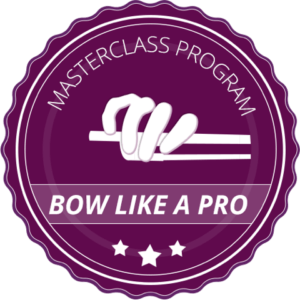 If there’s ONE thing you take away from this video and article, it’s that your bow technique determines your sound and expression on the violin.
If there’s ONE thing you take away from this video and article, it’s that your bow technique determines your sound and expression on the violin.
If you want to play the violin with feeling, sound great and touch people’s hearts, spend at least 15 minutes a day on practicing JUST bowing technique.
That’s exactly what you’ll learn if you take lessons with me and my teacher team in my program Bow like a Pro. Check it out right here!
Sources used for this video and article:
Please know that different violinists, teachers and authors use different ways to categorize the violin bow techniques. I have used the below resources and more to find out what’s used the most, but know that there are several ways to name and categorize the bow strokes.
- ‘Art of Violin Playing’ – Carl Flesch
- ‘De kunst van het vioolonderwijs’ (Dutch) – Louis Metz
- ‘Principles of violin playing and teaching’ – Ivan Galamian
- ‘The art of bowing practice’ – Robert Gerle
- ‘Orchestral bowing: style and function’ – James Kjelland
- ‘Basic principles of violin playing;’ – Paul Rolland
- Bow like a Pro – research for my online masterclass program
Music examples used in the video above:
- Detaché – Bach partita E major – Perlman
- Detaché – Paganini 16th caprice – Fischer
- Son filé – Bruch violin concerto – Jansen
- Legato – Tschaikovsky violin concerto – Bell
- Portato – Mendelssoh violin concerto – Hahn
- Double stops – Bach 2nd violin sonata – Ehnes
- Chords – Bach Chaconne – Vengerov
- Triple stops – Brahms violin concerto – Zimmerman
- Martelé – Sibelius violin concerto – Kavakos
- Collé – Tschaikovsky violin concerto – Jansen
- Fouetté – Mendelssohn violin concerto – Chen
- Solid Staccato – Wieniawski polonaise brillante – Zalai
- Flying staccato – Schubert sonatine – Zukerman
- Spiccato – Beethoven Frühling sonata – Mutter
- Spiccato – Sarasate Zigeunerweisen – Panfili
- Flying spiccato – Mendelssohn violin concerto – Jansen
- Sautillé – Paganini Moto perpetuo – Menuhin
- Ricochet – Paganini 5th caprice – Studer
- Jumping arpeggio – Mendelssohn violin concerto – Mutter
- Tremolo – Bruckner 7th Symphony – Wiener Philharmoniker
- Col legno – Mozart 5th violin concerto – Mutter
- Flautato – Bach Chaconne – Vengerov
- Chop Technique – Bronwen Beecher teaching fiddle bowing in my program Bow like a Pro
Like this? You’ll LOVE my ultimate violin bowing nerd project
After making this video in 2019 I made an updated version in 2022 with 102 different violin bowing techniques, terms and symbols. Watch it right here!
Your homework
Yup, as this was a lesson video, I’m going to give you some homework!
Pick one of the 24 bowing techniques, find an example on YouTube of a beautiful piece of music where you see this technique applied and post the link in the comments underneath. Enjoy listening to each others examples!
39 Comments
Trackbacks/Pingbacks
- Notation of Violin Bowing Techniques in Sheet Music | Violin Lounge TV #371 - Violin Lounge - […] making my video explaining and demonstrating 24 violin bowing techniques, I got several requests to show how they look…
- How to Play PARLANDO | Violin Bowing Technique | Violin Lounge TV #437 - Violin Lounge - […] Check out this video! […]


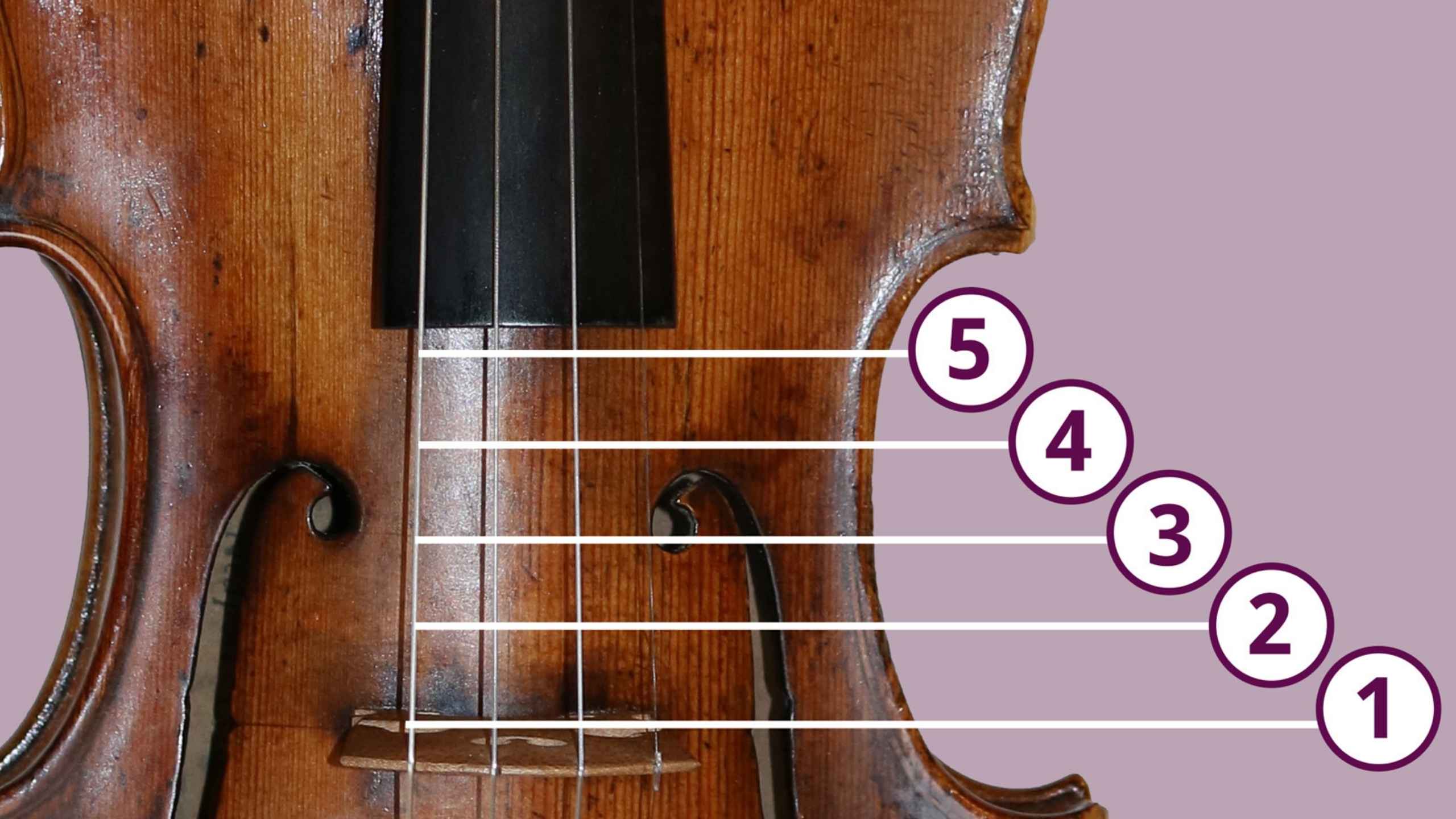
https://youtu.be/z1SfFV-fpu8
Zalata. You’ve worked hard to put these bowing techniques together. Well done!
Glad you like it, haha, it was DAYS of editing!
Hello Zlata,
Many thanks for putting together such a professional course and making it freely available.
I particularly liked the staccato and spiccato sections and I always though that a slight dig at the string at the start of each staccato note sounded better together with the short gap than just a short gap between following staccato notes and that is what you have shown. That little video snippet was worth a lot to me.
Jumping arpeggio has come at the right time since I am following Maria Bang’s Violin Method Book 2 and on page 135 I find Arpeggio Bowing ! Plenty to practice over this weekend; thank you so much.
Did I hear the sound of your beautiful twins in the background. My best wishes to you and your family.
Thank you, Stewart, I’m glad it’s helpful! Oh yes, the twins like to join my videos. I guess I can retire soon and let them do the teaching :P.
Hi Zlata
Thanks for you dedicated time to publish the posting
Kind Regards
Oh yes, it was DAYS of editing, but I liked making it very much :).
Wonderful, Zlata. That’s really good and useful. Background interruptions also sound very healthy.
Haha, yes, they’ll be teaching instead of me before you know it!
Thank you so much for this free video lesson! I’ve been waiting for a video with explanations to all these techniques with professional examples! I never thought anyone would make one! Thanks again!
Great, Amanda, haha, I guess nobody was as crazy like me to edit for days.
I understand! Thank you for all that hard work you put into these awesome videos! They help us violinists SO MUCH!
Wow, thank you for your kind words, Amanda, I’m glad it’s helpful!
I like to play violin am from Africa,I have my violin but I don’t know where to start with ,I love your vidio is good be blessed
A good place to start is my free beginner course right here. Enjoy!
Itzak Perlman’s bowing technique playing the legato
Hello, do you know of a place where I can get all the notation symbols for your list of bowing techniques? Or are they all just written out in words, instead of having a notation, like the mark for up or down bowing?
Also, I have come across an odd marking in a piece of music. It is above the note, like a marking for bowing instructions, and looks a bit like a “turn” marking, but not exactly. It is also like the keyboard (computer) marking “~” except that the left end is higher (so the mark is slanted, like a playground slide is slanted) and the right end has less of a hook on it. Could you tell me a) what it is called and b) what action on the violin it calls for?
Thanks,
Bruce
Hi Bruce, there’s a video coming up on notation for all these bowing techniques. If you subscribe, you’re the first to know! The marking you refer to, I’m sorry I don’t know it’s name in English, but depending on the context it refers to vibrato or an ornament and not to bow technique.
Amazing. I love the homework assignment. Even though it’s way over my expertise
Always good to explore, Dixie 🙂
Amazing, thanks.
Note: shouldn’t it be “sul ponticello” with “o” instead of “u”? (ponticello is the Italian name for the violin bridge).
Oops, typo, thanks for noting!
Dead Zlata,
Thanks for sharing such an extensive collection of bow techniques.
I came across your website when I was googling to find tips on a bow stroke, though i dont know what it is called. Can you help me with identifying it ? It comes a lot in semiquaver passages, when the first note is a down bow, and the the remaining three notes (or the remaining seven notes) are an upbow. So fast and light bow for one semiquaver and slow and heavier bow for other semiquavers. What is that called ? And do you have tips how to improve this ?
Thanks in advance.
Ming Peter
I think you mean ricochet as in the original bowing Paganini 5.
Dear Zlara, many thanks for taking the time to respond.
Sorry, I realise I was not clear enough: the bowing I am thinking of is on the string, not off. Example Bach A minor concerto Mvnt 1, bars 4-7 (and many similar later on, such as bar 89 – 99).
Is there a name for that bow stroke ?
Many thanks,
Ming Peter
Ah, I get what you mean. This is not a specific bow technique (it’s played detaché and legato technique wise), but more a rhythmical pattern. The trick is to play the first note with high bow speed and light and on the slur save the bow a bit and use more weight.
Many thanks.
Hoe klinkt BATTUTE bv. in de barbier van Rossini voor viool 2?
Er komt binnenkort een geupdate versie met nog meer streektechnieken, waaronder col legno battuto 🙂
I teach a secondary band & orchestra methods class at Wayne State University in Detroit, Michigan, and I would like to share this resource with my students. Do I have your permission to share this resource with my class?
Yes, please feel free to share anything you like as long as you link back to my website. Thanks and good luck with the course!
Thank you very much!
You’re welcome, Dave!
What an unselfish labor of love this site is! Thank you very much. So about an hour back I took out the violin [having not played in a long time] and attempted to play the opening bars of the Mendelsohn VC 3rd movement [along with a play-along score with Ms Hilary Hahn! ] Anyway ……our cat has since gone missing and the Pekingese is hiding under a chest of drawers. I will have to practice in the garage it seems – Greetings from Johannesburg South Africa.
You’re so welcome, Philip!
Here is a chopping technique video for a driving bluegrass sound, by Maggie O’Conner:
https://www.youtube.com/watch?v=41ZGFuUMn7g
Thanks for sharing!
Bookmarking this! Thank you so much for it! It is amusing how the French names are almost used in an opposite way while the Italian ones make sense… A detache (detached) means keep the bow in contact with the strings while a colle (“glued”) means lift the bow… And martele (“hammered”) also keeps the bow in contact, just hammers the pressure, not the bow. Super useful explanations of things I would likely have found myself really confused, simply based on the names. Thank you!
You’re so welcome 🙂
Thank you for explaining the bow techniques in media. Highly appreciate the efforts you put behind it.